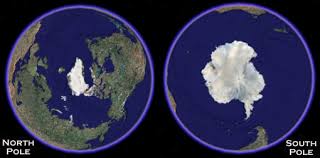Source: The Extinction Protocol: 2012 and beyond - 9/21/12

September 21, 2012 – ANTARCTICA - “Day 258 of 2012 is the highest for this date since satellite scanning of Antarctic ice areas commenced 33 years ago” the New Zealand Climate Science Coalition announced today. “It is also the fifth highest daily value on record.” Coalition chairman, Hon Barry Brill, says the most remarkable aspect is the extent to which the 2012 area exceeds normal Antarctica averages. “The sea ice cover yesterday was 311,000 square kilometers above the 1979-2012 average.
The surplus ice is more than twice the area of New Zealand.” The Antarctic dimensions come partly at the expense of Arctic sea ice,” said Mr. Brill. “Over the 33-year period aggregate global sea ice volumes have remained steady, but there are fluctuations between the two polar areas from year to year. The fluctuations are the result of ocean currents and wind patterns, rather than temperatures.
Antarctic ice is much more important than that of the Arctic. The area of its sea ice is a million square kilometers larger than the highest value ever recorded in the Arctic. Then, of course, the Antarctic is an entire continent, with more than 90% of the earth’s glacial ice,” said Mr. Brill. “It is appropriate that this record should occur in a week that The Listener carries a cover story featuring the winter low point of Arctic ice, along with multiple pictures of calving glaciers and forlorn polar bears,” said Mr. Brill. “The magazine has little to say about the Antarctic apart from complaining that it is “poorly understood.”
The author also avoids mentioning the glaring facts that no significant global warming has been recorded in the past 16 years, and that sea level rise is apparently decelerating. “It is unfortunate that under-informed writers, albeit unwittingly, mislead their readers who should be helped to understand the difference between sea ice extent and ice cap ice, both thickness and extent as regards the latter. The ice cap in the Arctic is small compared to the Antarctic.
The cap of the Antarctic is increasing in thickness in most places, except around the Antarctic Peninsula. Sea ice extent is largely a consequence of sea surface temperature, ocean currents and wind,” said Mr. Brill. -Scoop
ARCTIC - New sea ice is finally starting to form again in the Arctic, scientists reported Wednesday, but not before reaching another record low last Sunday. “We are now in uncharted territory,” Mark Serreze, director of the National Snow and Ice Data Center, said in a statement announcing the record low of 1.32 million square miles — nearly half the average extent from 1979 to 2010.
The extent has been tracked by satellite since 1979. “While we’ve long known that as the planet warms up, changes would be seen first and be most pronounced in the Arctic,” he added, “few of us were prepared for how rapidly the changes would actually occur.” Many experts expect the Arctic to be free of sea ice in summer at some point between 2015 and 2050. “Recent climate models suggest that ice-free conditions may happen before 2050,” noted center scientist Julienne Stroeve. But she added the caveat that the recent sudden rate of decline “remains faster than many of the models are able to capture.”
Serreze told NBC News he’s figuring on 2030, calling it “a pretty aggressive estimate.” The sea ice extent numbers come after the center reported last month that the summer sea ice on Aug. 26 had broken the previous record low set in 2007 of 1.61 million square miles. On Aug. 26 the sea ice extent was 1.58 million square miles, it said.
“We’re smashing a record that smashed a record,” center scientist Walt Meier said. In the 1980s, he said, summer sea ice would cover an area a bit smaller than the Lower 48 states. Now it is about half that. -MSNBC
Book quote: “The Arctic Ice sheet’s albedo ratio diminishes as the size of the Arctic ice cap shrinks. The whole runaway process compromises the system further. At the other end of the pole, nearly the opposite effect is occurs. Plunging temperatures increases the density of the Antarctica ice shelf- and the danger rises not from sublimation, but from massive fracturing and the seismic slippage of large ice sheets (shelves) as sub-glacial volcanism intensifies.” -The Extinction Protocol